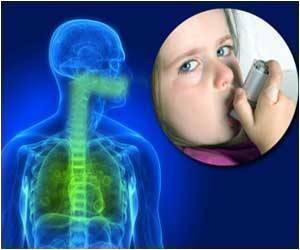Those who live closer to active natural gas wells in Pennsylvania are significantly more likely - 1.5 to four times more likely - to suffer asthma attacks.

‘Those who live closer to a large number or bigger active natural gas wells in Pennsylvania are significantly more likely - 1.5 to four times more likely - to suffer asthma attacks.’





"Ours is the first to look at asthma but we now have several studies suggesting adverse health outcomes related to the drilling of unconventional natural gas wells," says study leader Sara G. Rasmussen, MHS, a PhD candidate in the Bloomberg School's Department of Environmental Health Sciences. "Going forward, we need to focus on the exact reasons why these things are happening, because if we know why, we can help make the industry safer." For the study, Rasmussen and her colleagues analyzed health records from 2005 through 2012 from the Geisinger Health System, a health care provider that covers 40 counties in north and central Pennsylvania. The study is a joint effort of the Bloomberg School and the Geisinger Health System. Hopkins researchers identified more than 35,000 asthma patients between the ages of five and 90 years. They identified 20,749 mild attacks (requiring a corticosteroid prescription), 1,870 moderate ones (requiring an emergency room visit) and 4,782 severe attacks (requiring hospitalization). They mapped where the patients with these attacks lived; assigned them metrics based on the location, size, number, phase, total depth and gas production of the wells; and compared them to asthma patients who didn't have attacks in the same year.
Those who lived closer to a large number or bigger active natural gas wells were significantly more likely - 1.5 to four times more likely - to suffer asthma attacks. And while these asthma attacks were likely to occur more frequently around wells throughout the four phases of the development process, the researchers found that the increased risk was greater during the production phase, which can last many years. The findings held up even when accounting for other factors that can exacerbate asthma, including proximity to major roads, family history, smoking, socioeconomics and more.
The new study can't pinpoint why asthma attacks are more likely closer to more or larger wells, though researchers say that air pollution and increased stress levels from the noise, traffic and other community impacts associated with the industry could play a role. In previous research, stress has been implicated in substantially increasing the risk of asthma attacks.
Previous research has linked the fracking industry, for example, to an increase in such adverse reproductive outcomes as preterm births and lower birth weights, and also to a variety of symptoms such as those involving the skin or upper respiratory tract. The researchers say that drilling and production of wells has become safer and cleaner in the past years, something that would not be captured in this study.
Advertisement
Schwartz says that since they do not know exactly what may be increasing the risk of asthma attacks near more or bigger wells, patients should just follow usual, common-sense approaches to managing their condition. These include seeking immediate treatment if they have symptoms of an asthma attack such as increased wheezing, cough, or shortness of breath. Stress reduction techniques may also be useful, as may avoiding odors and staying indoors during periods of the day when air pollution may be worse.
Advertisement
Energy companies started producing natural gas using fracking when gas prices were high and supplies were low. While New York State has banned fracking altogether and there is a moratorium on it in Maryland, Pennsylvania has embraced the industry. Hydraulic fracturing has expanded rapidly in recent years in the western half of the country in states such as Colorado, North Dakota and Wyoming. In the East, West Virginia and Ohio also allow it.
Maryland's moratorium is set to expire in October 2017. The moratorium was passed in 2015 out of concern about fracking's potentially negative environmental effects but without benefit of the more recent scientific evidence. Schwartz says Maryland regulators should consider these new findings when they decide whether or how to allow drilling.
"Going forward, everyone can learn from Pennsylvania's experience," he says. "State regulatory bodies should use the growing number of health studies to understand the possible environmental and public health impacts of this industry and how to minimize them."
"Asthma Exacerbations and Unconventional Natural Gas Development in Marcellus Shale" was written by Sara G. Rasmussen, MHS; Elizabeth L. Ogburn, PhD; Meredith McCormack, MD; Joan A. Casey, PhD; Karen Bandeen-Roche, PhD; Dione G. Mercer, BS; and Brian S. Schwartz, MD, MS.
Source-Newswise















